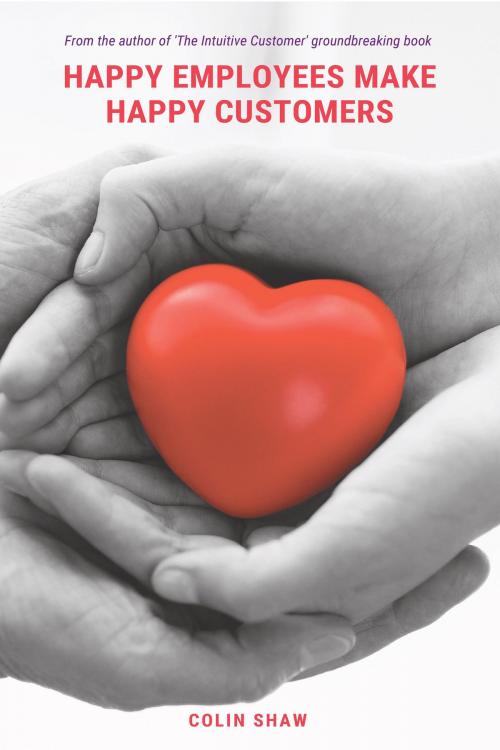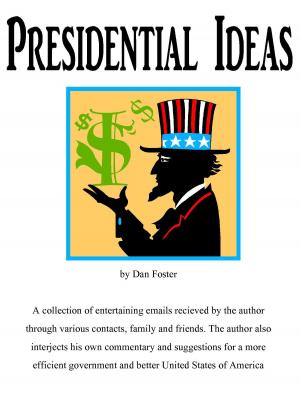Happy Employees Make Happy Customers
How Build Great Employee Engagement to Create a Great Customer Experience
Business & Finance, Marketing & Sales, Research| Author: | Colin Shaw | ISBN: | 9781543970463 |
| Publisher: | BookBaby | Publication: | May 1, 2019 |
| Imprint: | BookBaby | Language: | English |
| Author: | Colin Shaw |
| ISBN: | 9781543970463 |
| Publisher: | BookBaby |
| Publication: | May 1, 2019 |
| Imprint: | BookBaby |
| Language: | English |
Happy Employees Make Happy Customers: How to build great employee engagement to create a great customer experience By Colin Shaw Colin Shaw's new eBook, Happy Employees Make Happy Customers, explores the relationship between your employee engagement and your customer experience. Shaw is the founder and CEO of Beyond Philosophy, one of the world's first organizations devoted to customer experience. Shaw is also an international author of six best-selling books and an engaging keynote speaker. Shaw explains how organizations seeking to take their experiences to the next level should have combined and complementary customer and employee experience improvement programs. Employee engagement occurs when people feel committed to the company's mission. Like the most successful customer experience programs, the employees have an emotional connection to the company and enjoy personal satisfaction from their actions on the organization's behalf. Employee emotional engagement, much like customer engagement, doesn't happen by accident. Deliberate design and dedication of resources create it. It starts by defining what you want both of these experiences to be. So, if you want your customer experience to be built on trust and leave customers feeling valued and important, your employees should feel the same way. Many companies understand having an excellent customer experience is the next competitive differentiator for organizations. Fewer of them, however, understand the importance of creating an employee experience that mirrors the customer experience. Forgetting the employee experience is a significant mistake. The experience you give your customers is the same one you should provide for your employees. Not only is it excellent for your employee engagement but it is also crucial to your bottom line. Research reveals that customer satisfaction ratings are highest with companies that have high employee engagement. Also, these high satisfaction ratings delivered increased revenues for those organizations through referrals, return visits and cross-channel purchases. Shaw explores the interconnected nature of the employee experience and the customer experience. He also demonstrates how you cannot have excellence in one experience without equal distinction in the other. Shaw explains how each champions the success of the other, and how to combine the implementation of both for your team. Happy Employees Make Happy Customers describes what it takes to evoke the proper emotions from employees so they can deliver outstanding customer experience. He discusses why the employee experience matters, how to hire the right employees and what to look for in the people you bring on board. He reviews the significance of training and maintaining the employee experience. He also covers the employee's responsibility in the relationship and how leadership can foster the proper environment for success. Finally, he shares examples of companies that promote an environment conducive to employee engagement and retention—and those who don't. Founded in 2002, Beyond Philosophy is the world's first operationally-focused customer experience company. Over the past two decades, Shaw has been providing consultancy, training and specialized research for companies. Shaw and his team have nearly twenty years' experience guiding organizations on their unique tools and methodologies. Shaw illustrates his ideas with examples from headlines and stories from his career to give these concepts life. With his natural storytelling style and focus on practicality, Happy Employees Make Happy Customers helps organizations take their employee experience to the next level and elevate their customer experience along with it. In other words, Shaw takes his readers "beyond the philosophy" and into the action of designing and implementing world-class employee experiences that deliver the customer experience you want and that today's competitive market demands.
Happy Employees Make Happy Customers: How to build great employee engagement to create a great customer experience By Colin Shaw Colin Shaw's new eBook, Happy Employees Make Happy Customers, explores the relationship between your employee engagement and your customer experience. Shaw is the founder and CEO of Beyond Philosophy, one of the world's first organizations devoted to customer experience. Shaw is also an international author of six best-selling books and an engaging keynote speaker. Shaw explains how organizations seeking to take their experiences to the next level should have combined and complementary customer and employee experience improvement programs. Employee engagement occurs when people feel committed to the company's mission. Like the most successful customer experience programs, the employees have an emotional connection to the company and enjoy personal satisfaction from their actions on the organization's behalf. Employee emotional engagement, much like customer engagement, doesn't happen by accident. Deliberate design and dedication of resources create it. It starts by defining what you want both of these experiences to be. So, if you want your customer experience to be built on trust and leave customers feeling valued and important, your employees should feel the same way. Many companies understand having an excellent customer experience is the next competitive differentiator for organizations. Fewer of them, however, understand the importance of creating an employee experience that mirrors the customer experience. Forgetting the employee experience is a significant mistake. The experience you give your customers is the same one you should provide for your employees. Not only is it excellent for your employee engagement but it is also crucial to your bottom line. Research reveals that customer satisfaction ratings are highest with companies that have high employee engagement. Also, these high satisfaction ratings delivered increased revenues for those organizations through referrals, return visits and cross-channel purchases. Shaw explores the interconnected nature of the employee experience and the customer experience. He also demonstrates how you cannot have excellence in one experience without equal distinction in the other. Shaw explains how each champions the success of the other, and how to combine the implementation of both for your team. Happy Employees Make Happy Customers describes what it takes to evoke the proper emotions from employees so they can deliver outstanding customer experience. He discusses why the employee experience matters, how to hire the right employees and what to look for in the people you bring on board. He reviews the significance of training and maintaining the employee experience. He also covers the employee's responsibility in the relationship and how leadership can foster the proper environment for success. Finally, he shares examples of companies that promote an environment conducive to employee engagement and retention—and those who don't. Founded in 2002, Beyond Philosophy is the world's first operationally-focused customer experience company. Over the past two decades, Shaw has been providing consultancy, training and specialized research for companies. Shaw and his team have nearly twenty years' experience guiding organizations on their unique tools and methodologies. Shaw illustrates his ideas with examples from headlines and stories from his career to give these concepts life. With his natural storytelling style and focus on practicality, Happy Employees Make Happy Customers helps organizations take their employee experience to the next level and elevate their customer experience along with it. In other words, Shaw takes his readers "beyond the philosophy" and into the action of designing and implementing world-class employee experiences that deliver the customer experience you want and that today's competitive market demands.















